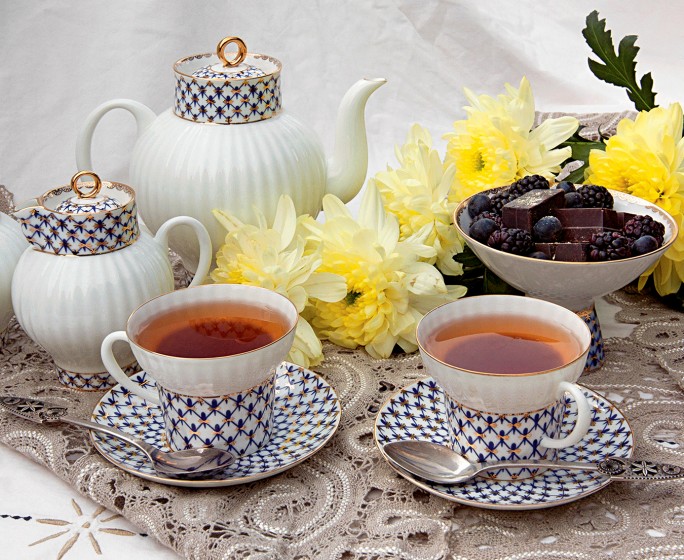Art of Porcelain’s storefront on West Pender boasts an extensive display window, offering a complete view into the neatly organized gallery of wares. This transparency is a proud statement; beyond the glass are shelves upon shelves of tea service sets, coffee cups placed upon matching saucers, dinner sets and animal figurines. All are sourced directly from the Imperial Porcelain Manufactory (popularly known as the Lomonosov Porcelain Factory) in St. Petersburg, Russia. All are arranged just so. Tracking lights are trained on the glazed, hand-painted pieces, emphasizing the glow and elegance that, for ages, has transfixed aristocratic classes across Europe and Asia.
Vladimir Balashov first began dealing in porcelain 22 years ago in Russia. He moved to Vancouver with his family in 2006, and after experimenting with a few different ventures, he opened Art of Porcelain last year. The boutique is stocked with individual pieces and striking collections carefully selected by Balashov. Among the designs are elegant patterns, intricate floral ornaments, geometric shapes, popular architectural landmarks and traditional Russian motifs and silhouettes. The Cobalt Net has become the Manufactory’s trademark design, with blue intertwining lines and drops and a gold accent against the milky white porcelain. This traditional pattern is the most popular. As Balashov explains, “It fits well with [people’s] kitchens, with their ideas, with their life.”
To Balashov, porcelain is an exquisite example of the marriage between art and everyday use. He explains that the taste of tea or coffee differs slightly depending on the material, wall-thickness and shape of the cup. There are many conflicting schools of thought when it comes to choosing the most appropriate vessel for flavour appreciation. Balashov’s pick? He prefers fine bone china, which is slim and light, “so when you pour the tea inside, it’s almost on the air,” he says, his eyes bright.
But more importantly, the very experience of taking tea is greatly influenced by feeling and perception, like an attachment or affection toward a favourite mug. “It’s actually how you feel with the cup, how you imagine the procedure itself. If you take a cup with some art on it, it also [impresses an] additional feeling onto you,” Balashov says.
Indeed, there is some undeniable quality to be felt by sipping tea from a cup with over two centuries of history. Because the secrets of porcelain production were so closely guarded by their Chinese inventors, the mysterious material was often thought to possess magical properties; porcelain dishes were believed to change colour if poisoned food or drink were placed in them. So smitten with the ceramic was Empress Elizabeth of Russia that at her order, in 1774, the Imperial Porcelain Manufactory was founded to develop and produce the coveted “white gold” for the ruling Romanov family and the Imperial Court. Today, everything continues to be made in the same tradition set by Dmitry Vinogradov, who devoted 13 years of his life to develop, through rigorous scientific testing, Russian porcelain.
Right from its inception, the Imperial Porcelain Factory has been a patient and deliberate entity. “I think one of the advantages of a good and well-established factory is that they, through time, really choose between thousands and thousands of samples to get the right shape, the right decoration,” says Balashov. The various shapes and myriad patterns are designed to complement each other. Balance is key—if the design is even slightly unflattering on the shape, the item is reworked or discarded. The result is not perfection per se, but classic and timeless pieces in elegant shapes, some with ornate designs, others with a single, simple accent, but all embellished with an astonishing density of colour.
Not only are these porcelain sets exquisite adornments to a home, but they represent the time and care taken to cherish the finer details in life when cordoning off a section of a stimulating day for respite. And there’s no denying that, whether connoisseur or appreciator, it feels magnificent to be sipping a tea from a cup steeped in history.
Photo: Silver Balashov.
